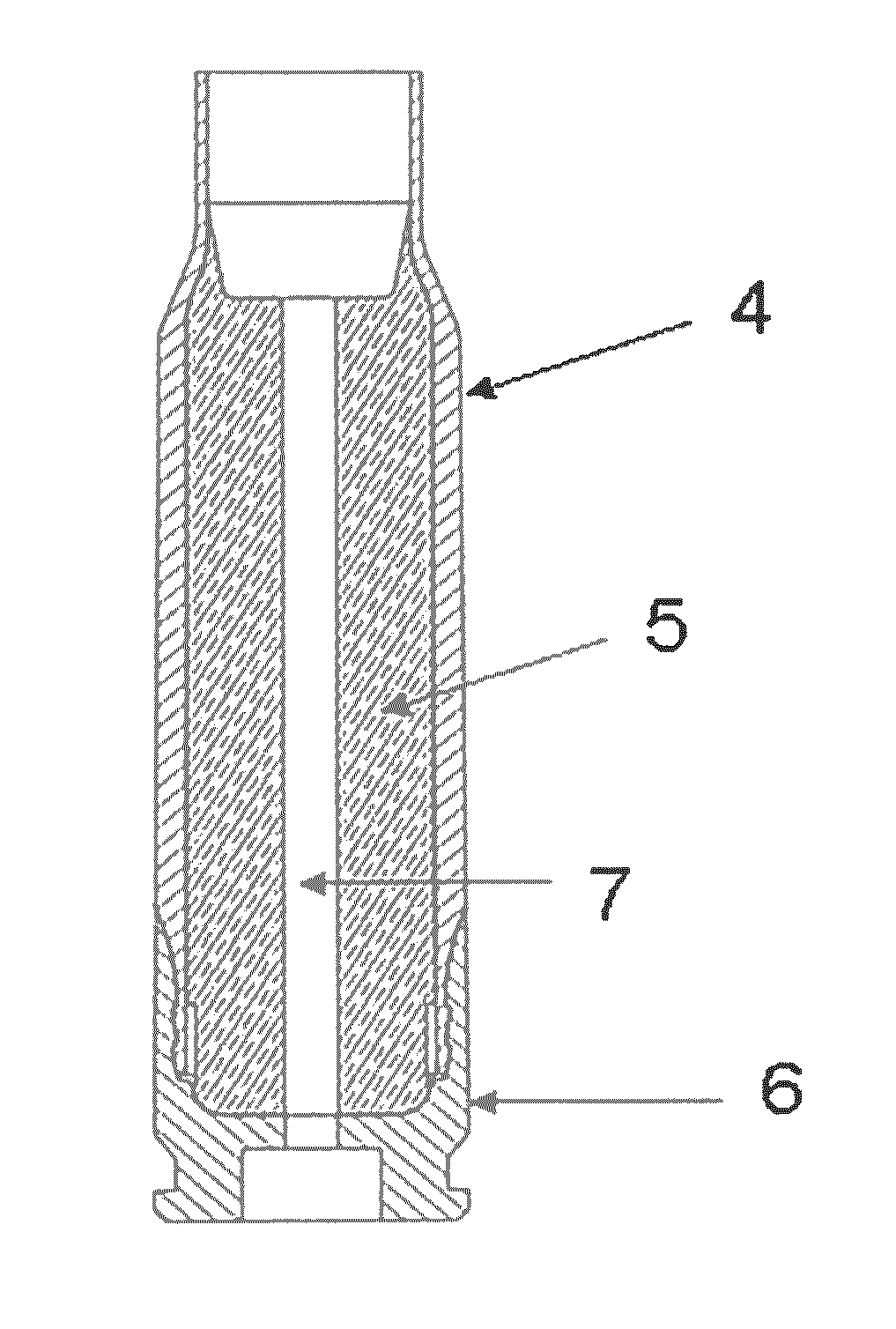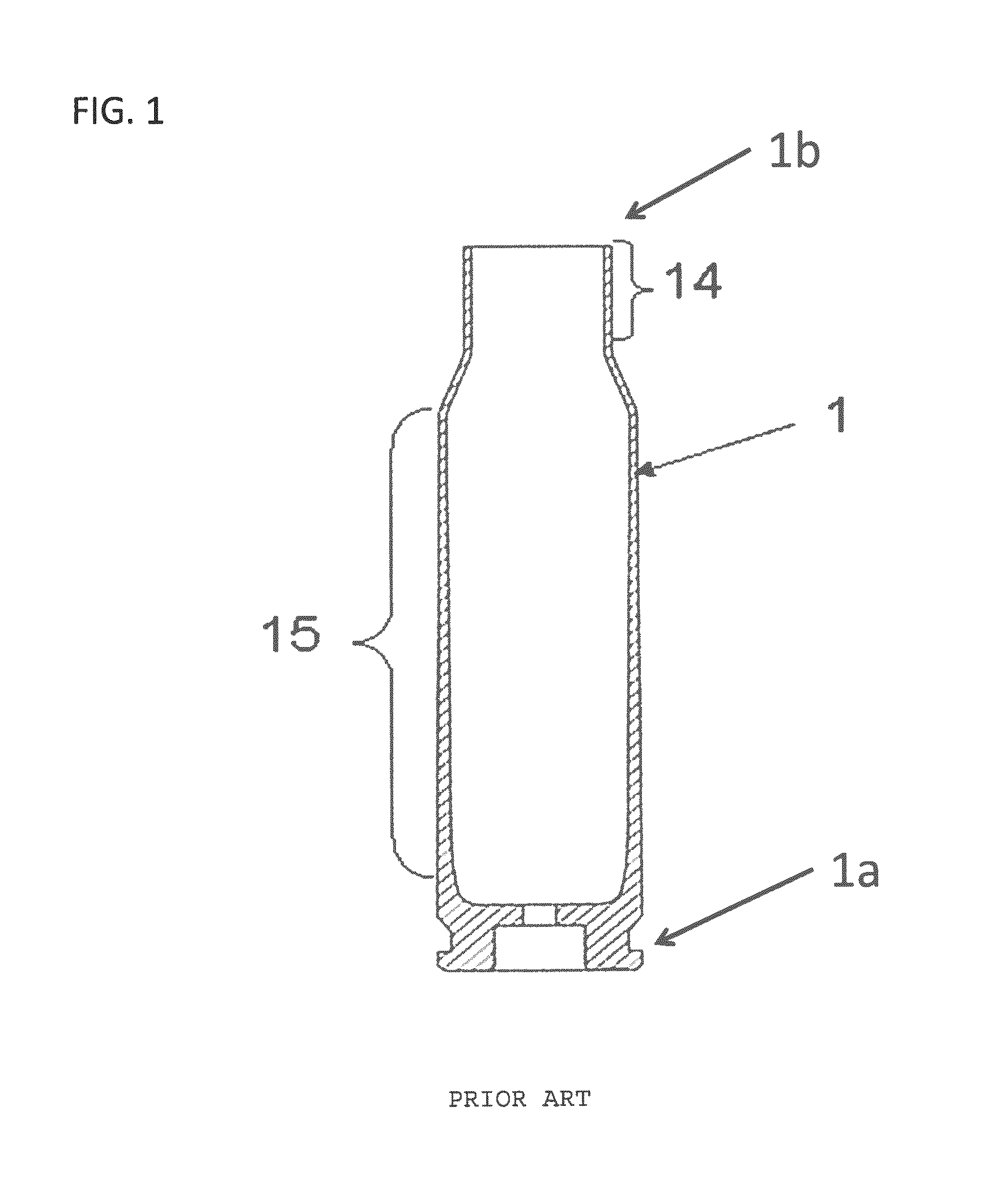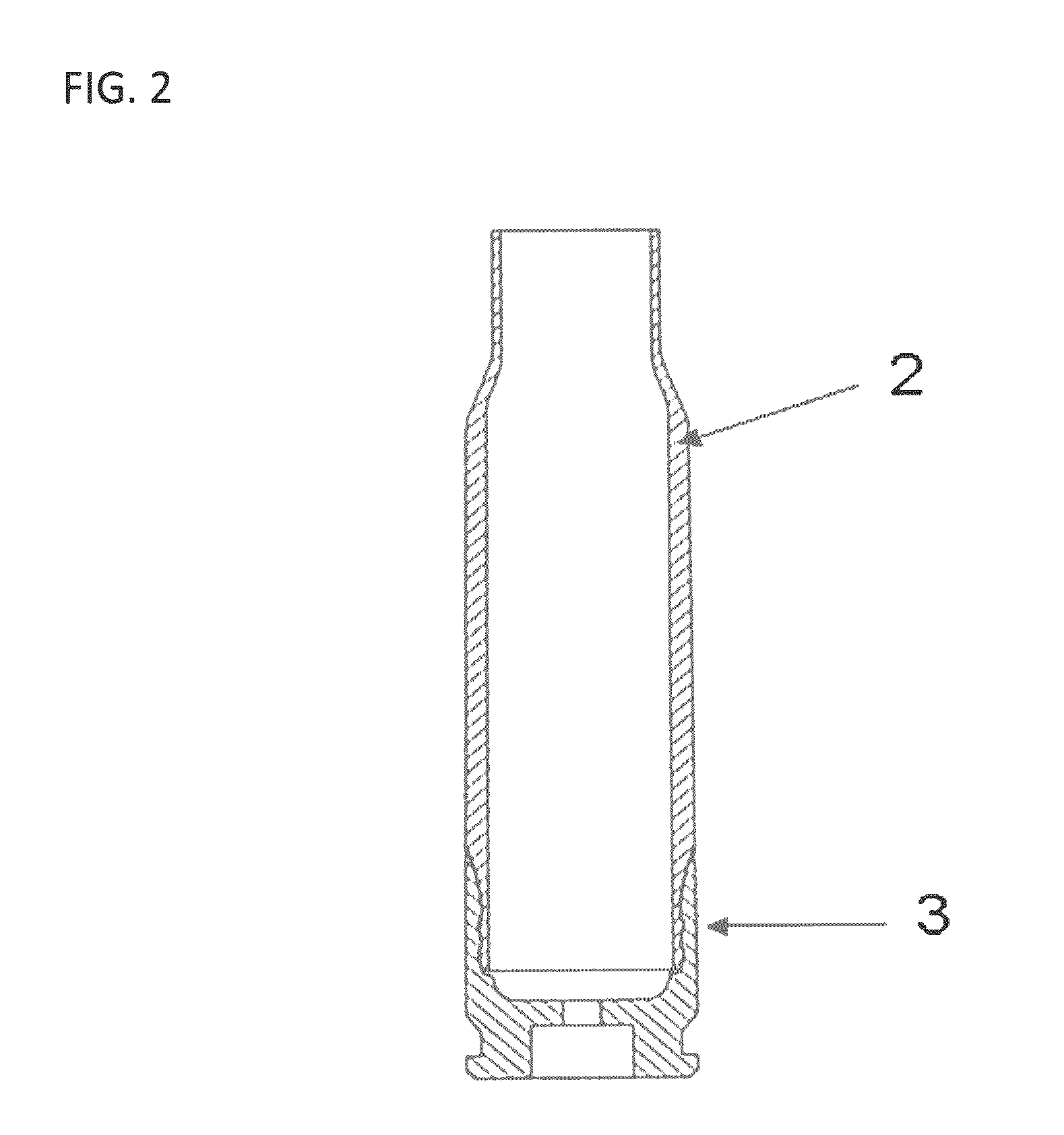Subsonic ammunition casing
a subsonic and ammunition technology, applied in the field of ammunition articles, can solve the problems of reduced accuracy, unsatisfactory solution, and relatively large empty volume inside the cas
- Summary
- Abstract
- Description
- Claims
- Application Information
AI Technical Summary
Benefits of technology
Problems solved by technology
Method used
Image
Examples
example 1
.308 Caliber Testing High B / N Ratio
[0073]Ten lightweight polymeric ammunition articles (.308 caliber / 7.62 mm) are assembled from injection molded caselets, polymeric restrictors and caps machined from cold headed brass blanks (C26000). Each cap has a pre-installed primer (CCI #34). The caselets are designed with ridges around the lower portion which create a snap interference fit with corresponding grooves on the cap interior, thus joining the caselet and cap securely. The cartridges are then filled with propellant (10 grains of WC 842). After loading the propellant, the projectiles (180 grains) are inserted into the cartridge and attached using an adhesive. The caselet has the following nominal dimensions: minimum wall thickness (B) of 0.190″ (41 1 / 1000th of an inch) and neck thickness (N) of 0.017″ (17 1 / 1000th of an inch). The B / N ratio of the design is ˜11.2. The interior volume of the case is approximately 80% reduced in comparison to the equivalent supersonic round.
[0074]Ammun...
example 2
.308 Caliber Testing Low B / N Ratio
[0075]Ten lightweight polymeric ammunition articles (.308 caliber / 7.62 mm) are assembled from injection molded caselets, polymeric restrictors and caps machined from cold headed brass blanks (C26000). Each cap has a pre-installed primer (CCI #34). The caselets are designed with ridges around the lower portion which create a snap interference fit with corresponding grooves on the cap interior, thus joining the caselet and cap securely. The cartridges are then filled with propellant (10 grains of WC 842). After loading the propellant, the projectiles (180 grains) are inserted into the cartridge and attached using an adhesive. The caselet has the following nominal dimensions: minimum wall thickness (B) of 0.100″ (41 1 / 1000th of an inch) and neck thickness (N) of 0.017″ (17 1 / 1000th of an inch). The B / N ratio of the design is ˜5.8. The interior volume of the case is approximately 50% reduced in comparison to the equivalent supersonic round.
[0076]Ammunit...
PUM
 Login to View More
Login to View More Abstract
Description
Claims
Application Information
 Login to View More
Login to View More - R&D
- Intellectual Property
- Life Sciences
- Materials
- Tech Scout
- Unparalleled Data Quality
- Higher Quality Content
- 60% Fewer Hallucinations
Browse by: Latest US Patents, China's latest patents, Technical Efficacy Thesaurus, Application Domain, Technology Topic, Popular Technical Reports.
© 2025 PatSnap. All rights reserved.Legal|Privacy policy|Modern Slavery Act Transparency Statement|Sitemap|About US| Contact US: help@patsnap.com



